Last updated on February 29, 2024
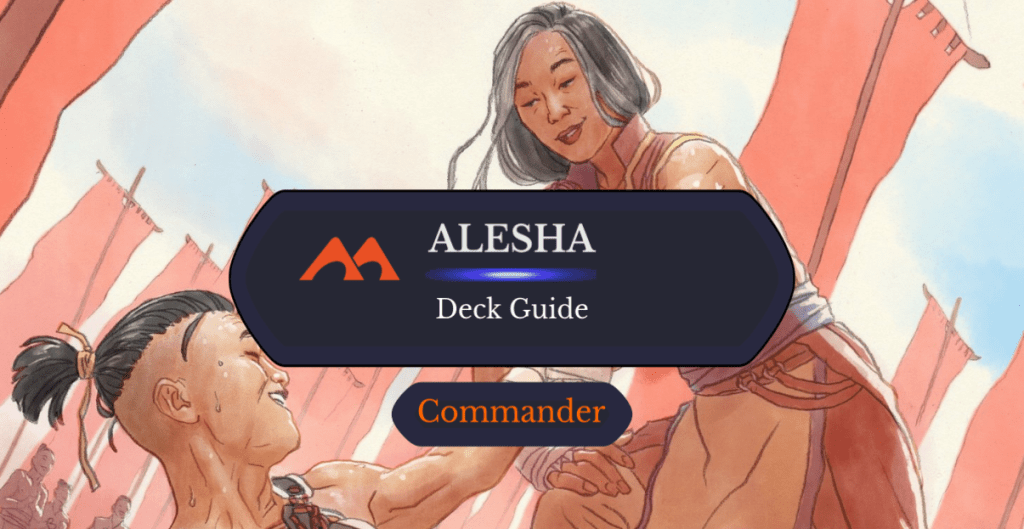
Alesha, Who Smiles at Death | Illustration by Winona Nelson
There’s an effortless beauty to a power-2 creature with an enters-the-battlefield effect. From “bears with set’s mechanic” to surprise removal, low-to-the-ground creatures are really what makes Magic tick. Today, we’re running out a horde of low-power creatures to back up Alesha, Who Smiles at Death as they careen full-tilt across the battlefield at your opponents.
How do you build a deck for combat that revolves around such weak creatures? Let’s find out!
The Deck
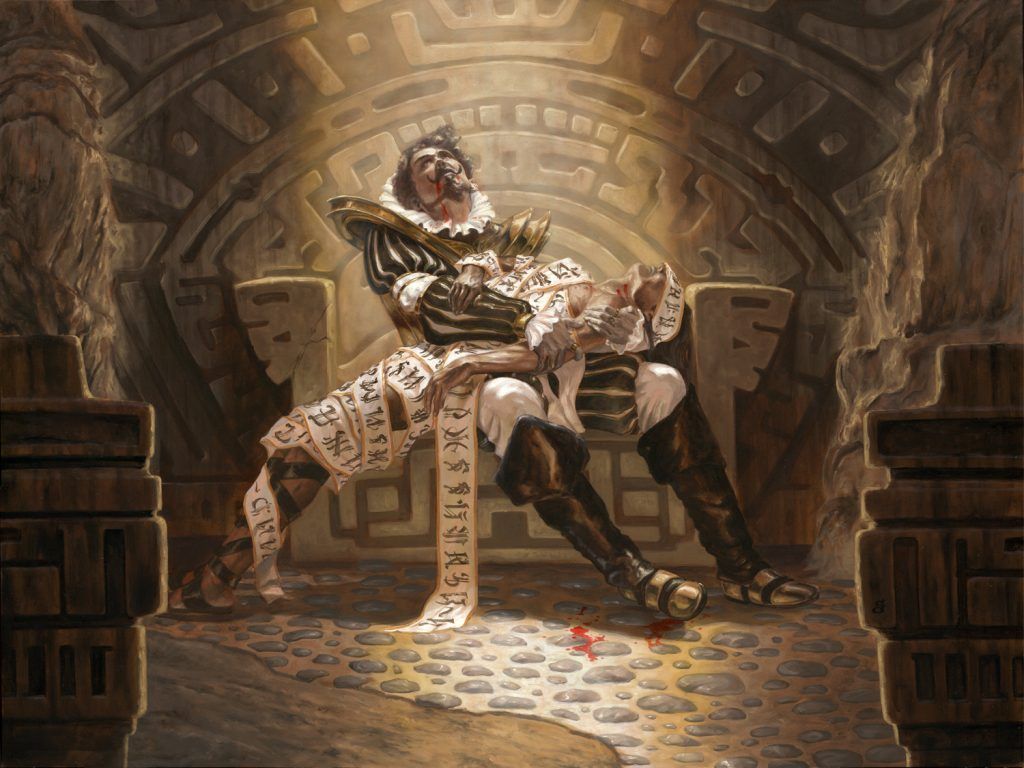
Bartolomé del Presidio | Illustration by Randy Gallegos
Commander (1)
Creature (33)
Soul Warden
Viscera Seer
Bartolomé del Presidio
Corpse Knight
General's Enforcer
Thalia, Guardian of Thraben
Zulaport Cutthroat
Ambuscade Shaman
Breathless Knight
Delney, Streetwise Lookout
Imperial Recruiter
Mentor of the Meek
Pawn of Ulamog
Seasoned Pyromancer
Village Bell-Ringer
Welcoming Vampire
Anger
Avalanche Riders
Blade Historian
Dimir House Guard
Flame-Kin Zealot
Goldnight Commander
Lim-Dûl's Paladin
Murderous Redcap
Palace Jailer
Solemn Simulacrum
Vile Entomber
Balefire Liege
Karmic Guide
Master of Cruelties
Reveillark
Serra Redeemer
Siege-Gang Commander
Sorcery (5)
Bone Shards
Faithless Looting
Gamble
Buried Alive
Blasphemous Act
Instant (3)
Ephemerate
Boros Charm
Faithless Salvaging
Artifact (9)
Sol Ring
Arcane Signet
Key to the City
Swiftfoot Boots
Ashnod's Altar
Ronin Warclub
Spear of Heliod
Tenza, Godo's Maul
Conjurer's Closet
Enchantment (13)
Reconnaissance
Goblin Bombardment
Impact Tremors
Glorious Anthem
Goblin War Drums
Mardu Ascendancy
Martyr's Cause
Breath of Fury
Field of Souls
Glory of Warfare
Outpost Siege
Dictate of Erebos
Warstorm Surge
Land (36)
Blood Crypt
Bloodstained Mire
Boros Garrison
Clifftop Retreat
Command Tower
Dragonskull Summit
Drossforge Bridge
Forgotten Cave
Maze of Ith
Mountain x4
Myriad Landscape
Nomad Outpost
Orzhov Basilica
Plains x7
Rakdos Carnarium
Rogue's Passage
Scoured Barrens
Shattered Sanctum
Smoldering Marsh
Sundown Pass
Sunhome, Fortress of the Legion
Swamp x3
Temple of Triumph
Vault of the Archangel
Wind-Scarred Crag
This Alesha, Who Smiles at Death Commander deck wants to fill the graveyard with valuable utility creatures and tricky threats and combo pieces before reanimating them for 2 mana. We’ll use a variety of ways to fill our graveyard and tutor up essential cards before closing out the game with an infinite combo, pinging and draining our foes with aristocrats effects, or by buffing those reanimated creatures with our anthem effects.
Access to free sacrifices is important to this deck; with so many small creatures, we won’t be winning a lot of early combats, and while our creatures are all relatively cheap, we want to have enough mana available to activate Alesha, Who Smiles at Death and play a new creature after combat. Keeping the pressure on is essential to this deck’s strategy, so play fast and loose with your board, with the intent to reanimate everything you lose early in the game.
The Commander
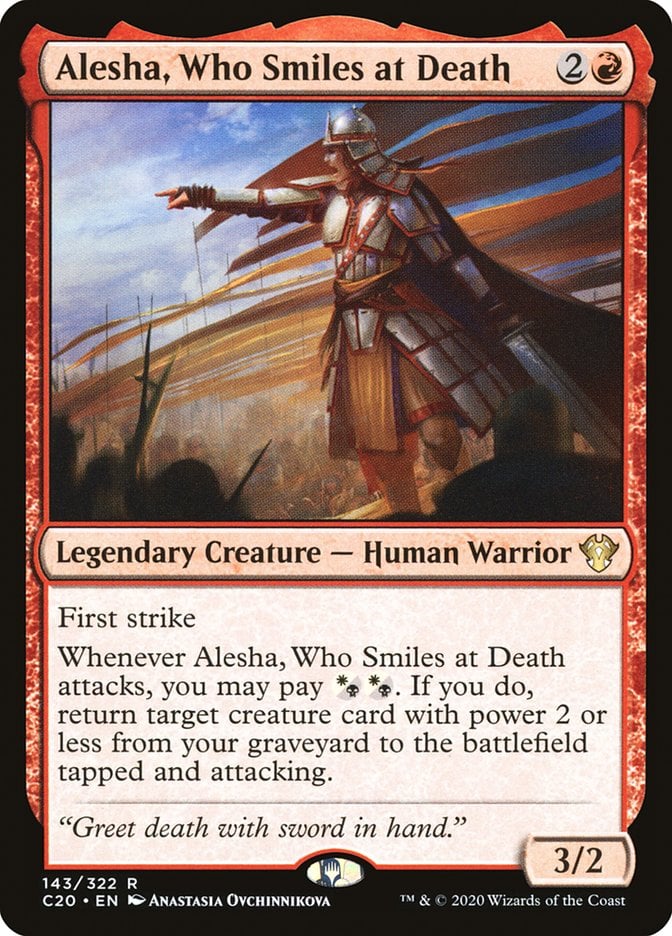
Alesha, Who Smiles at Death is a 3/2 legendary human warrior with first strike that returns creatures from your graveyard to the battlefield tapped and attacking as part of an attack trigger. The caveat is the target creature must have power 2 or less. This locks us out of any really powerful attackers, so instead we’re running a slew of utility creatures with useful enters-the-battlefield effects. First strike means Alesha is usually safe to attack in the first few turns, but we’ll need to protect our commander each time it attacks to fully utilize its ability. Cards like Reconnaissance, Rogue's Passage, and Maze of Ith will be indispensable for an attacking Alesha.
Filling the Graveyard
First thing’s first: we need a graveyard. The best reanimator decks will tutor cards straight to the graveyard, and Alesha's color identity gives us access to spells like Buried Alive and Vile Entomber. While Buried Alive initially gets us more creatures for its price, it’s important to remember Vile Entomber will hit the field again once Alesha’s around, usually netting more value over the course of the game due to its easily recurring nature.
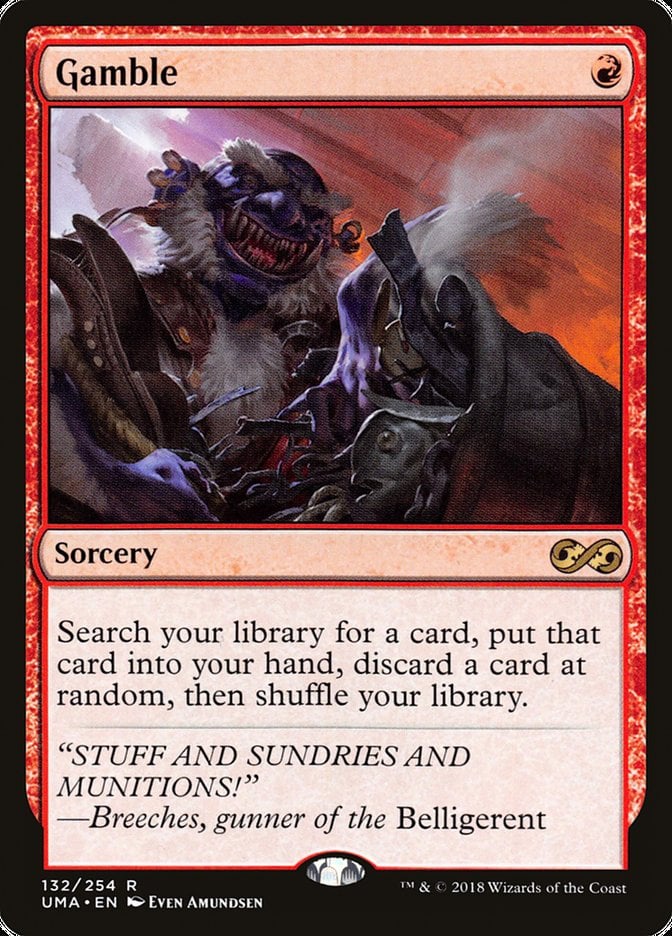
Similarly, Gamble is a great tutor for an Alesha deck, As the inherent “downside” of Gamble is actually better for our deck. Frequently, we’ll find ourselves stuck with too many creatures in our hand, and none of our good targets in the graveyard. Gamble lets us search up whatever creature we need, and tosses it or another creature in our hand straight into the graveyard.
Most of our card advantage and ramp puts cards in our graveyard, as well. Faithless Looting and its cousin Faithless Salvaging are both staple draw spells in red, and should come as no surprise to anyone. Ashnod's Altar, Viscera Seer, Dimir House Guard, Goblin Bombardment and Martyr's Cause round out our manaless sacrifice outlets.
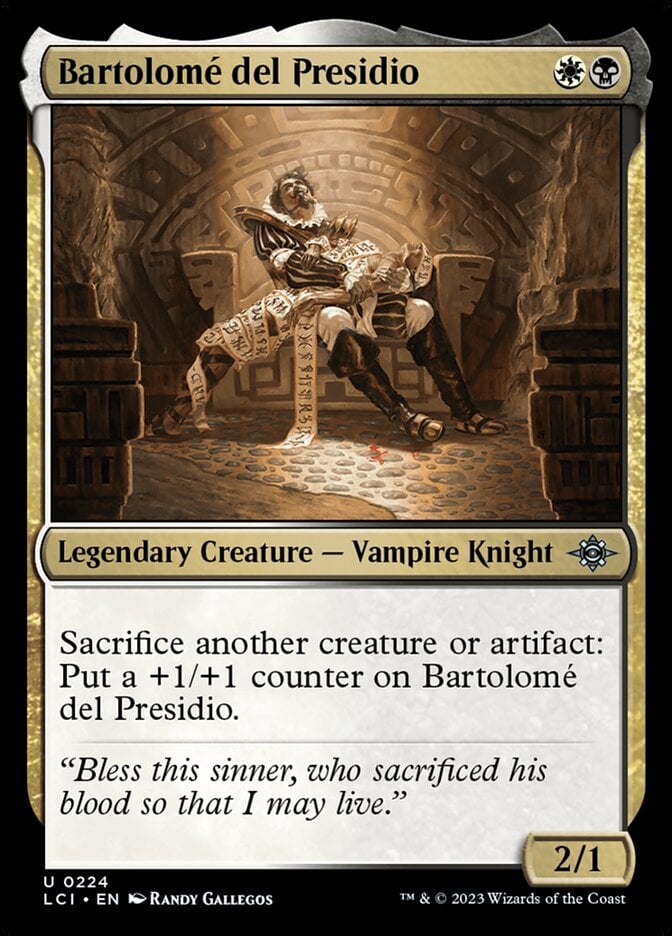
Finally, a new card I’ve enjoyed playing is Bartolomé del Presidio, basically a better Carrion Feeder.
Emptying the Graveyard
Now that we’ve got all our exciting new tools safely stored in our Stanley brand graveyard, how do we go about bringing them into play? Well obviously, we’ll use Alesha, Who Smiles at Death’s ability, except it’s never quite so simple. Alesha’s 3/2 first-striking body is alright in the early game, but by turn 5 or 6, we’ll start seeing other players’ Wurmcoil Engines and the like.
The simplest way to keep Alesha alive during combat is to make it unblockable. Many players run Rogue's Passage, but we’re doubling down on unblockable effects by including Key to the City (another great way to fill up your ‘yard, too!). Goblin War Drums gives Alesha (and everything else you control) menace, which helps them sneak past blockers here and there.
However, no true Mardu commander would ever run from battle. Instead, you can lean in and make Alesha a real combat threat alongside their warriors. Ronin Warclub and Tenza, Godo's Maul are both somewhat flavorful includes mostly present to buff up Alesha before combat. Ronin Warclub also does the neat trick of auto-attaching itself to whatever creature Alesha reanimates into combat.
The Mardu Horde isn’t just Alesha, though. A suite of anthem cards buff up Alesha’s warriors in this deck, including Glorious Anthem, Glory of Warfare, and Spear of Heliod. Goldnight Commander and Flame-Kin Zealot work similarly, albeit stapled onto bodies that require ETBs.
The Graveyard-Toolbox
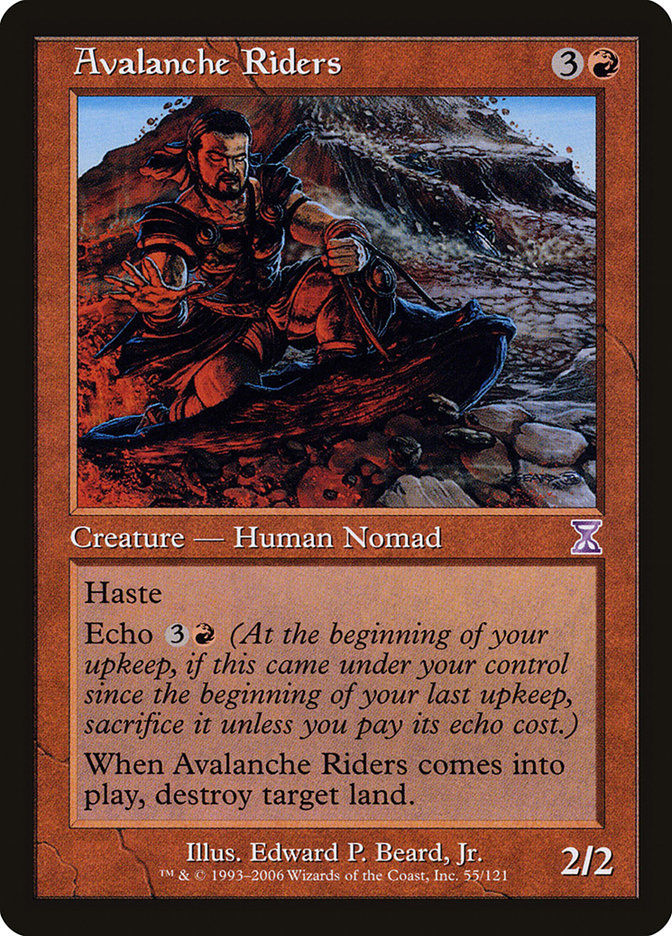
Now, let’s take a look at the fun stuff. There are a ton of really frustrating cards for you to maximize with Alesha, Who Smiles at Death. One of my favorites is Avalanche Riders. An early Avalanche Riders can lock an opponent at just a few mana sources, and sacrifices itself for you on your next upkeep so you can return it to play with Alesha!
Ambuscade Shaman is a little-known orc shaman from the same Magic set as Alesha and was very obviously designed to be used with it. Ambuscade Shaman’s unique triggered ability means that whatever creature we bring back into combat will be at least 4 power going into blockers, and hopefully more if we’ve already set the field with anthems. Serra Redeemer does a similar job, but more permanently.
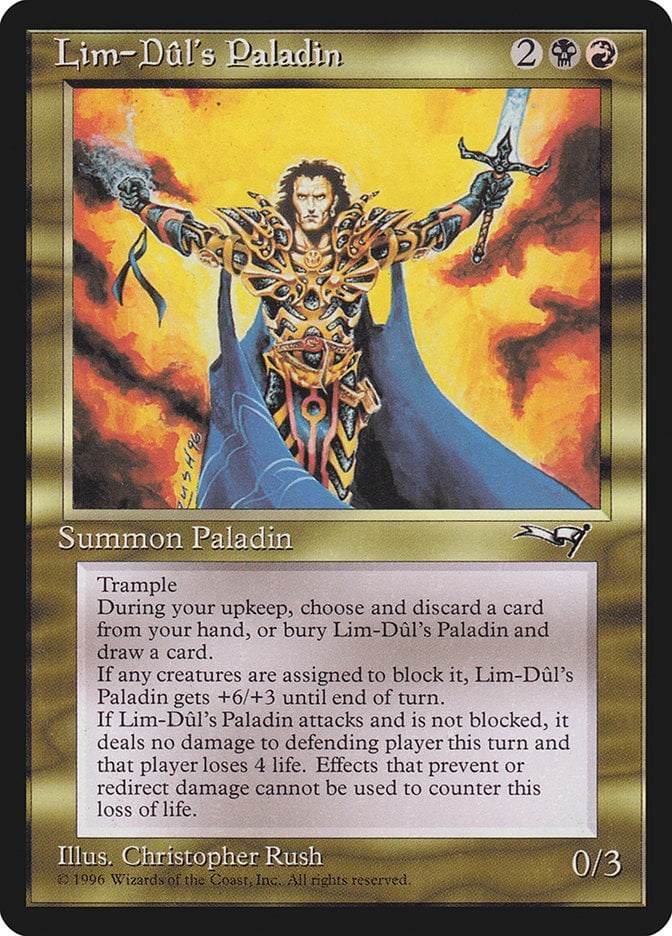
Another rare choice, Lim-Dul's Paladin is a wonky creature from the Alliances block with a few paragraphs of text that basically amount to it either being a 6/6 with trample, or just 4 lost life. Really, all this combat-step nonsense is just a distraction: The Paladin’s real value is its upkeep cost. A free discard means we can dump a better reanimation target into our graveyard, or we can choose to let the Paladin die and replace it with a draw (which we then reanimate to start the whole valuable process over again).

Master of Cruelties is a popular choice amongst Alesha decks, and here’s why: Master of Cruelties can be brought into play, tapped and attacking, from the graveyard with Alesha’s ability. If they’re both swinging at the same player, and that player can’t block them, they’ll lose the game right then and there. Master of Cruelties sets the target's life total to 1, and then Alesha’s 3 damage is dealt. This is a super sneaky way to end games before they even start, coming online early if you can hit a few tutors before your opponents have set up.
A lot of our creatures simply synergize well with other power 2 or less bodies, like Mentor of the Meek and Welcoming Vampire. One new card that I’m most excited to add to my Alesha deck is Delney, Streetwise Lookout. Dropping Delney will blow the value in this deck sky high. Just imagine hitting two lands with every Avalanche Riders, or 6 damage off of Balefire Liege for every red spell. Plus, Delney keeps all of your un-buffed creatures partially unblockable and out of the graveyard until you say so.
And, of course, this Alesha deck is running the infamous Karmic Guide/Reveillark combo. Karmic Guide and Reveillark can combine with any of our free sacrifice outlets for infinite enters and leaves the battlefield triggers. This means infinite damage off of everything from Goblin Bombardment to Impact Tremors and Warstorm Surge, to infinite lifegain from Soul Warden and infinite drain from Zulaport Cutthroat. Hitting these two creatures is a death sentence for your opponents.
Finally, we’re favoring creature-based removal and interaction over the typical sorceries and instants that’d otherwise fill these slots in a Commander deck. Thalia, Guardian of Thraben is a huge pain for opponents’ spellslinger decks and punishes those wimpy noncreature decks by forcing them to play at your tempo. Palace Jailer is our go-to for an Oblivion Ring effect, and we rely heavily on General's Enforcer for graveyard hate.
Smiling At Death
We’ve already touched on a few of the cards that synergize with our creatures dying and re-entering, like Zulaport Cutthroat, but a few more warrant mentioning.
Breathless Knight and Corpse Knight are two sides of the same coin, benefitting from our creatures entering the battlefield over and over.
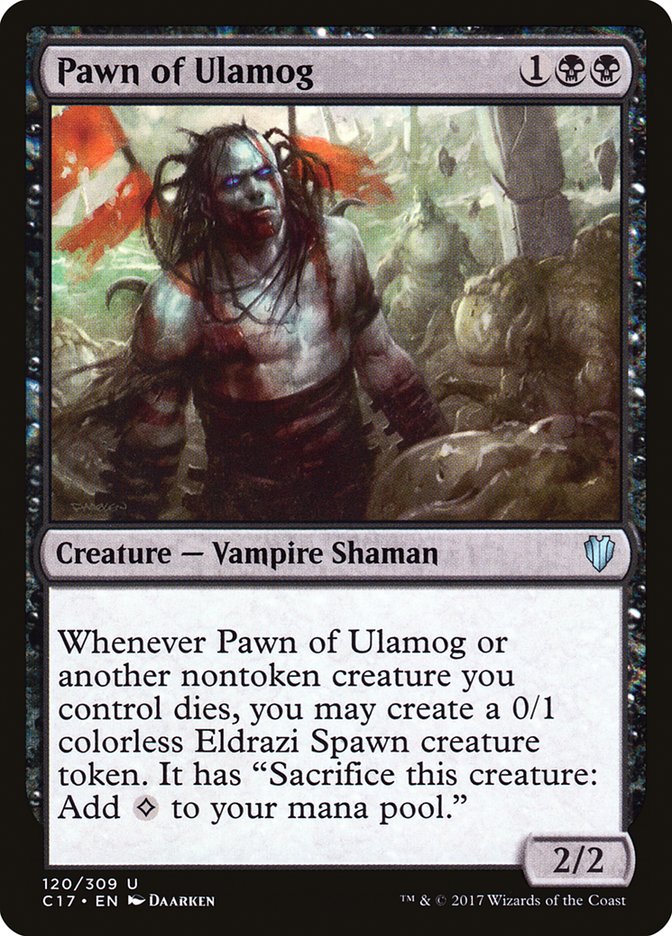
Pawn of Ulamog is great because it provides ramp, an ETB trigger, and a sacrifice trigger all in one token.
Outpost Siege, Impact Tremors, and Warstorm Surge are all noncreature permanents that eke out tiny bits of damage for every sacrifice and reanimation we pull off. Note that Warstorm Surge gets exponentially better when we use anthems to buff our creatures as they enter the battlefield.
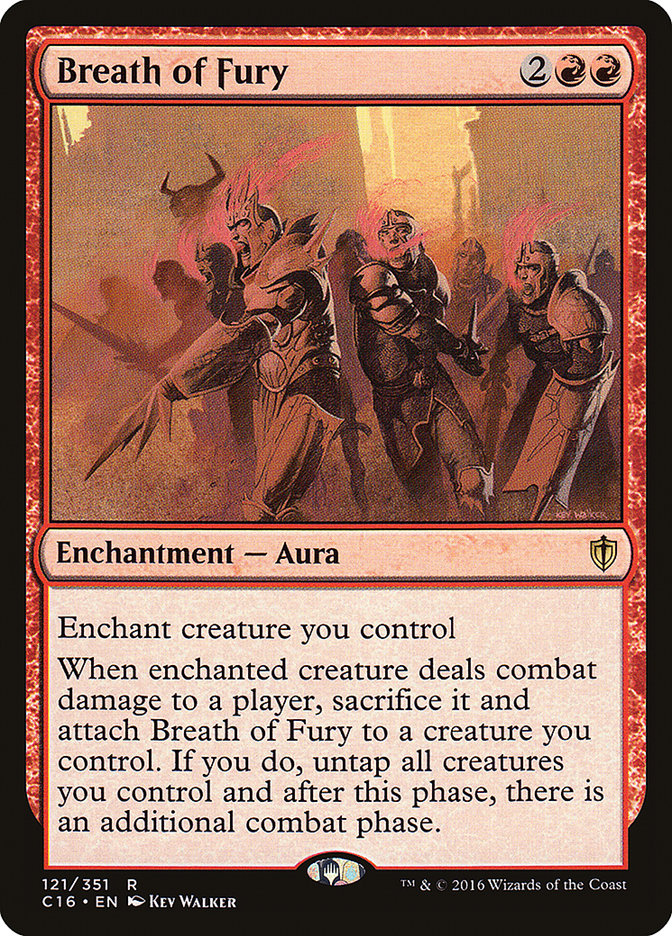
Finally, I want to mention Breath of Fury. This is our only way to get an additional combat step in this deck, but it must be used sparingly. Combat will continue until we run out of creatures, so be sure you have the mana up to reanimate new targets for it if you don’t want to lose Alesha. There is, in theory, a world where you could run Sunbird Standard, craft it with a white and a black card, and then use it to infinitely reanimate creatures with Alesha and infinitely attack in the combat step, but that’s an insane amount of hoop-jumping for a mid payoff.
The Mana Base
We’re keeping our mana base tight with only 35 mana-producing lands and just two mana rocks: Arcane Signet and Sol Ring. Our deck is relatively low to the ground, so we really don’t need to plan on hitting 8 mana on turn 5.
The Strategy
This Alesha, Who Smiles at Death Commander deck has several options to achieve victory, and it’s important you learn to read the room as the game progresses to see which one will be most effective.
Early game is analysis time. We’re running more than a few tutors, so a hand with one or two isn’t unlikely. Keep these hands. Putting a Master of Cruelties into your graveyard early means we can start removing players as early as turn 4. In addition, opening hands with a generic free sacrifice outlet (like Viscera Seer) or a specific one (like Avalanche Riders) are best. The whole deck sputters out without at least something in your graveyard to reanimate with Alesha.
Also use this time to determine what strategy you’re going to focus on. That spellslinger player probably won’t have any blockers anytime soon, so maybe we go for a quick Master of Cruelties kill on them first. Or maybe that stax player is starting to bog down the combat step with Propaganda and Ghostly Prison? Start digging for Zulaport Cutthroat and Karmic Guide and Reveillark to combo out.
We’re vulnerable to graveyard hate and removal here at Alesha, Inc., so on the off chance we’re locked out of our graveyard combos, we can always switch gears and just start beating face. There’s an impressive amount of damage this deck can put out with a couple Glory of Warfares and Glorious Anthems on the field.
Combos and Interactions
There are a few nasty interactions and combos in this deck that we’ve touched on, but should cover in detail here.
First, the way Master of Cruelties interacts with Alesha, Who Smiles at Death is both broken and hilariously funny. Master of Cruelties must attack alone, unless you skip the declare attackers step and just put it directly into play tapped and attacking with Alesha’s ability. If the player they’re attacking doesn’t/can’t block those two, two things happen. First, Master of Cruelties’s ability will trigger, setting that opponent’s life total to 1. Then, Alesha will deal 3 combat damage to that player, ending their whole career.
The second is a classic combo that folks have been playing since the Dark Ages of Commander, back when our only Mardu option was Oros, the Avenger. Karmic Guide and Reveillark can basically reanimate each other infinitely, so long as you have a free sacrifice outlet hidden somewhere amongst them.
Here’s how it works: We have Goblin Bombardment on the field and Karmic Guide in our graveyard. We cast Reveillark, then sacrifice it to Bombardment (or whatever sac outlet you have). Reveillark returns Karmic Guide and another small creature of your choice to the battlefield. Karmic Guide targets Revaillark on ETB, but before resolving that trigger, you sacrifice Karmic Guide to Bombardment to deal damage. Resolve the Karmic Guide trigger, returning Reveillark to play, then sac Reveillark to Bombardment to repeat the process until all foes are destroyed.
Rule 0 Violation Check
Ok, so the Karmic Guide combo is a little punishing to play against, but it's also been around for so long and is so fragile to the smallest bit of graveyard hate, I don’t anticipate many people having issues with it.
Budget Options
For the cheapest printings, this deck will run you a total of about $190. Not too bad, considering. If that seems a little steep for you, there are some easy cuts to cheapen up this deck.
Delney, Streetwise Lookout is currently sitting around $20. This might not hold, given it’s still pre-release at time of writing, but I think we can safely assume this one will stay pricey. Replacing Delney with another cheap 2-power creature is as easy as slapping a Kathari Bomber into the deck.
In addition, both Bloodstained Mire and Blood Crypt are accounting for half of the money spent on lands in this deck – you can easily cut them for a Rakdos Guildgate and Akoum Refuge.
Other Builds
This Alesha deck splits the difference between aristocrats, combo, and good ol’ combat damage. However, Alesha, Who Smiles at Death can be used for a variety of other builds.
One interesting one I’ve found is an Alesha Slivers deck. Traditionally the realm of 5-color decks, shoving Slivers into a Mardu identity puts just enough restriction on the creature type to breed innovation. Most of the 60 Slivers in Mardu colors already have power 2 or less. With a little focus on discarding and milling them into your graveyard, Alesha can churn a lot of Slivers out of your graveyard for cheap.
Wrap Up

Master of Cruelties | Illustration by Chase Stone
Alesha, Who Smiles at Death is one the oldest Commander decks in my collection. I built my Alesha deck when Fate Reforged dropped, and I’ve been playing it and modifying it ever since. Alesha forces you to look at the simple beauty of a 2-drop with an enters-the-battlefield effect and find a way to extract the smallest amounts of advantage to win.
Are there any odd 2-power creatures I’ve forgotten about? Has anyone tried any other creature-type based builds with Alesha? Let me know in the comments, or over on Draftsim’s Twitter/X.
Thanks for reading, and keep turning ‘em sideways!
Follow Draftsim for awesome articles and set updates: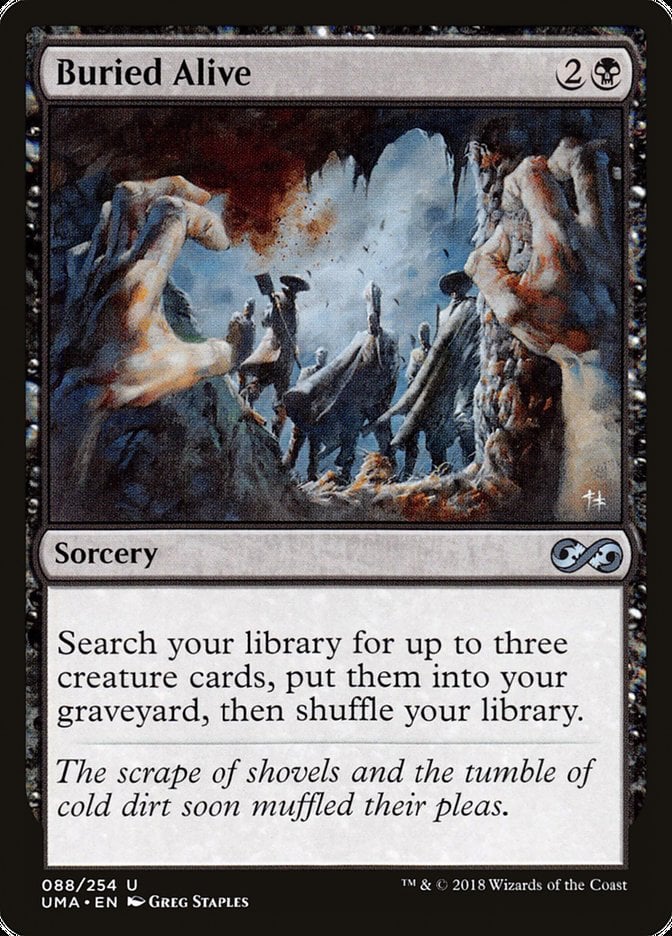

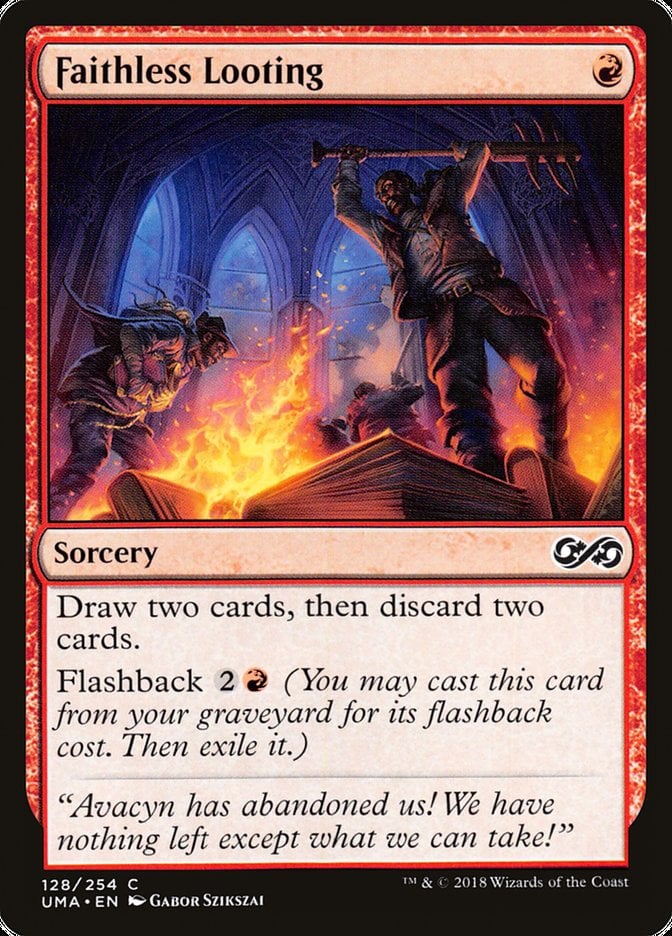
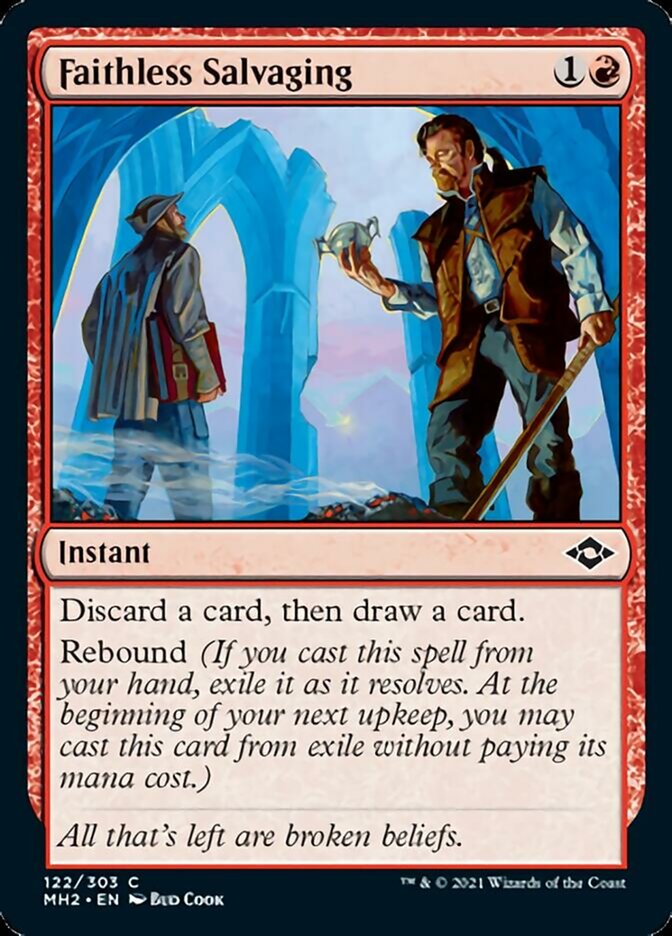


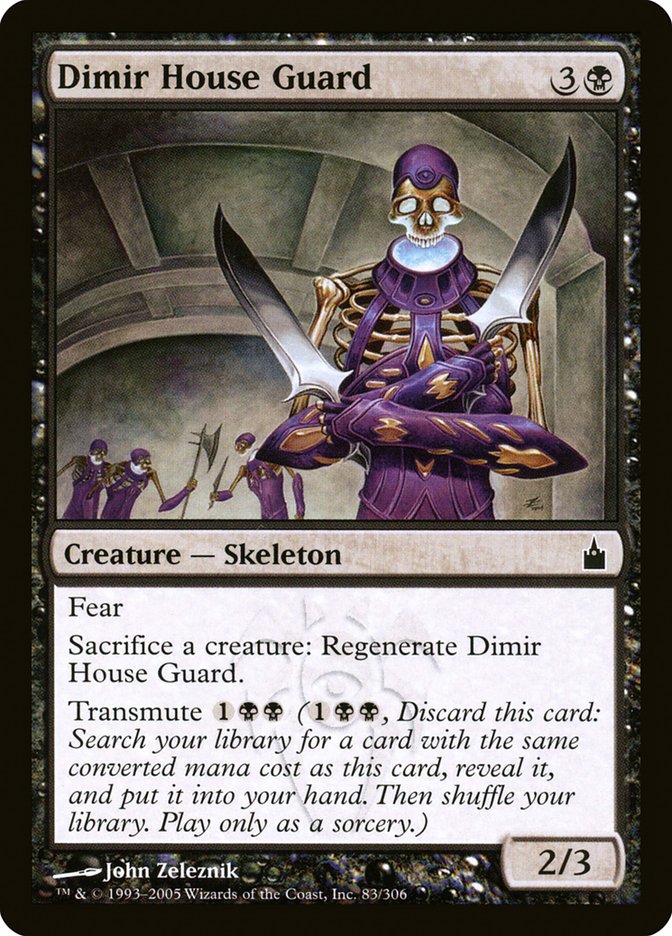
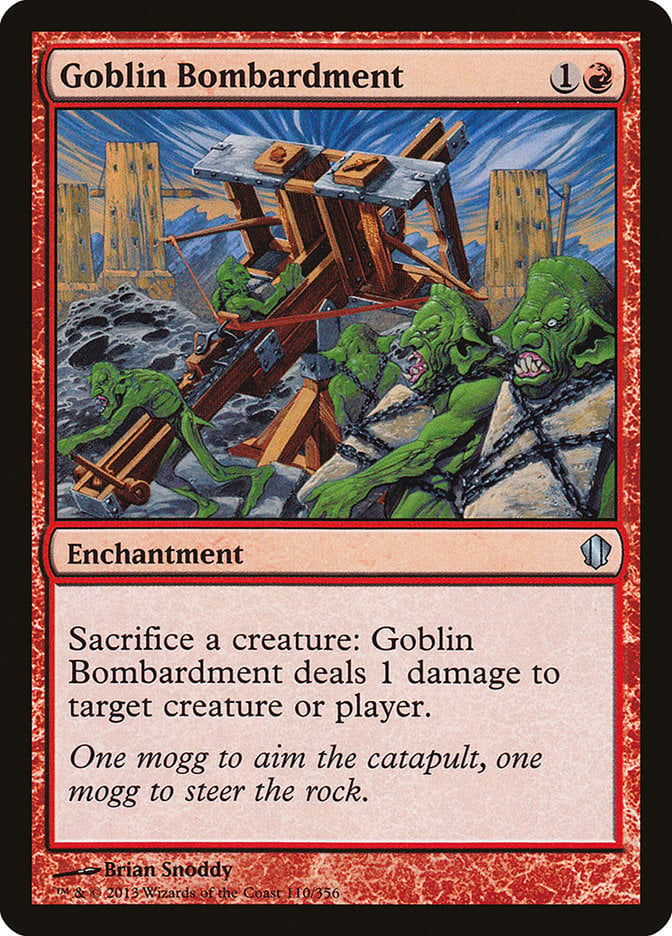
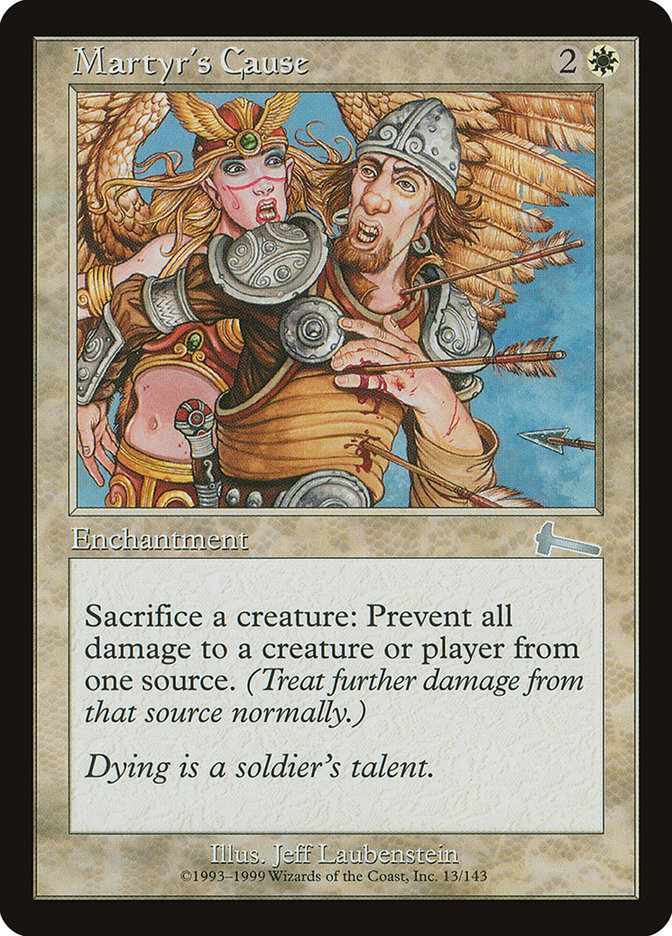
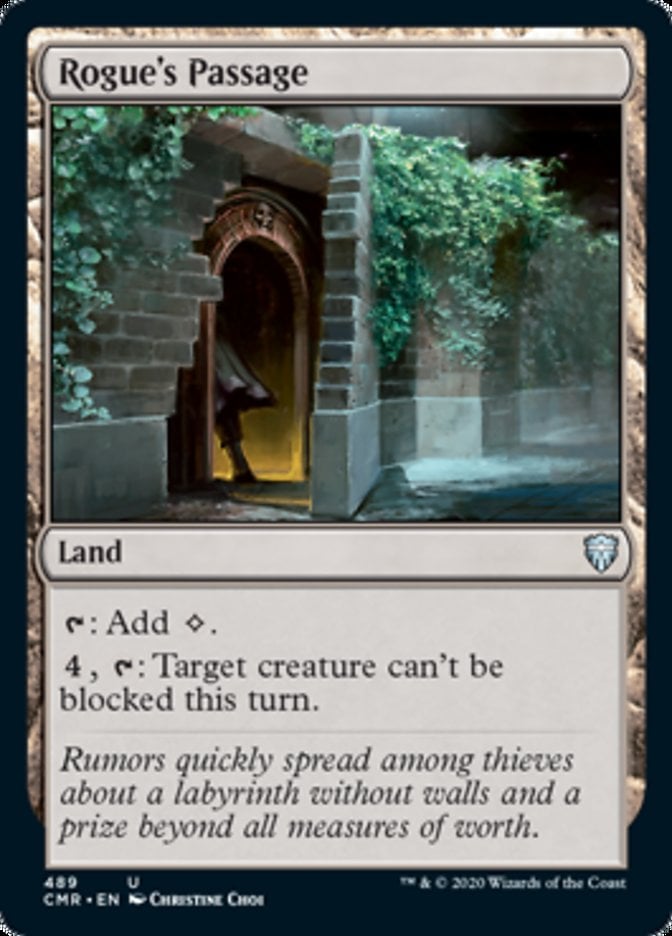

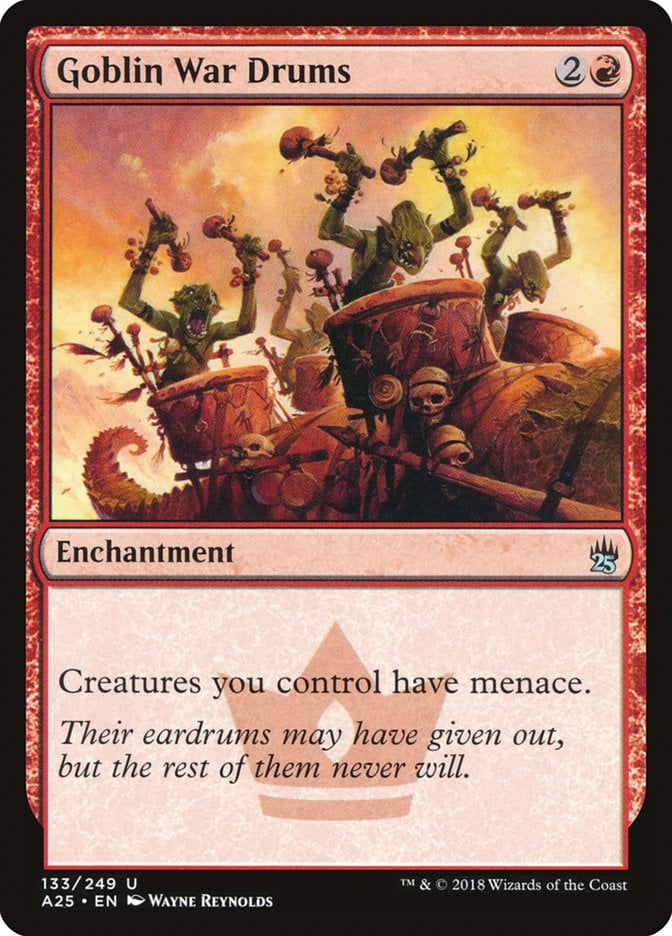
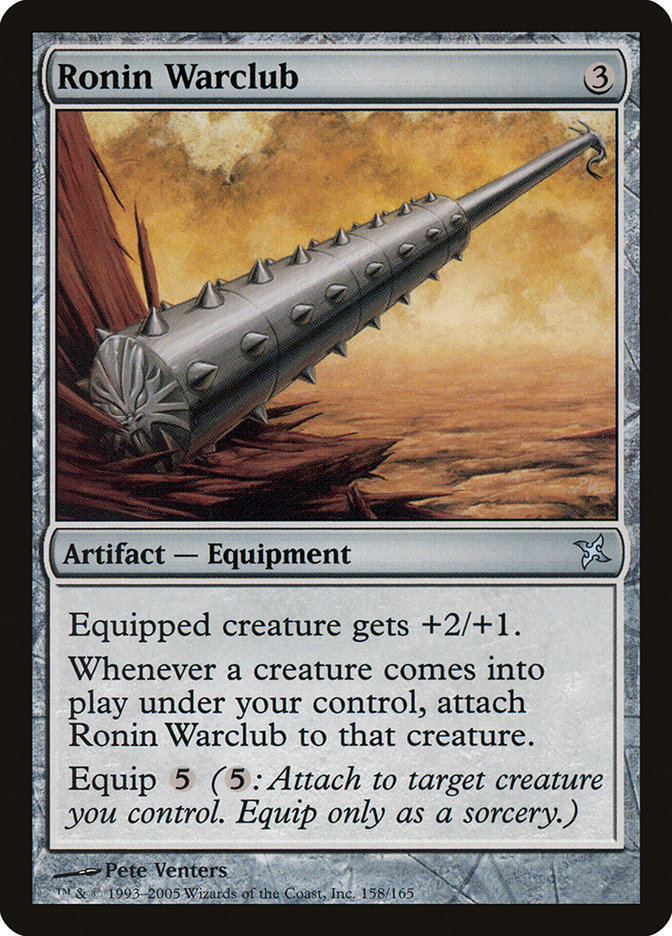
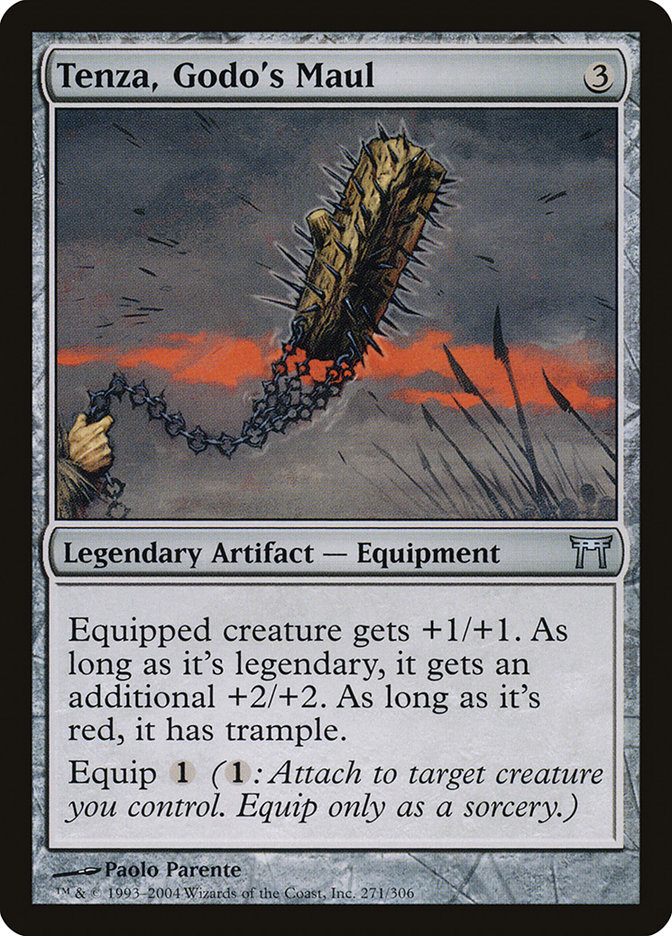

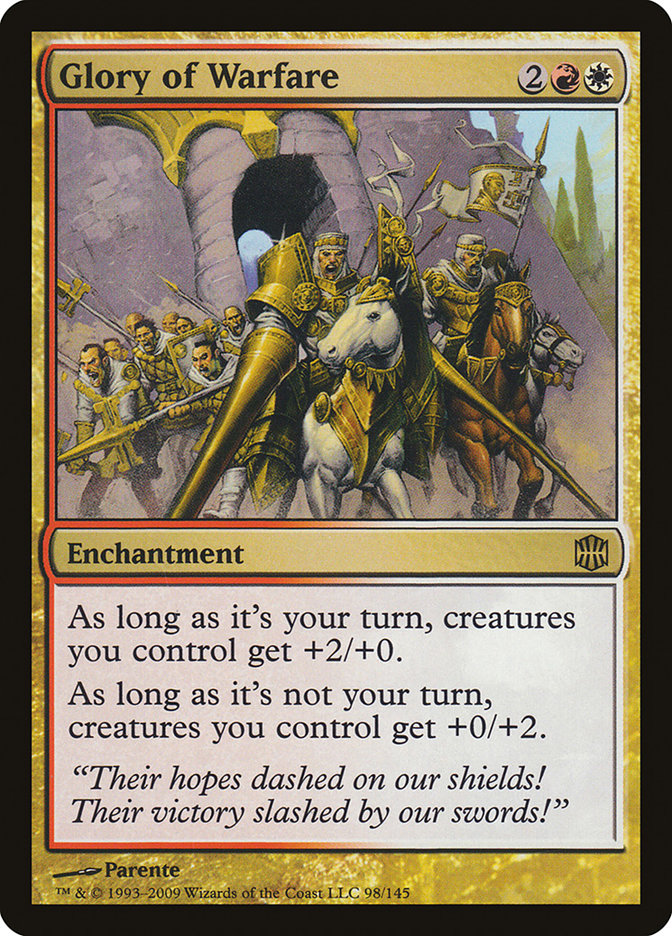


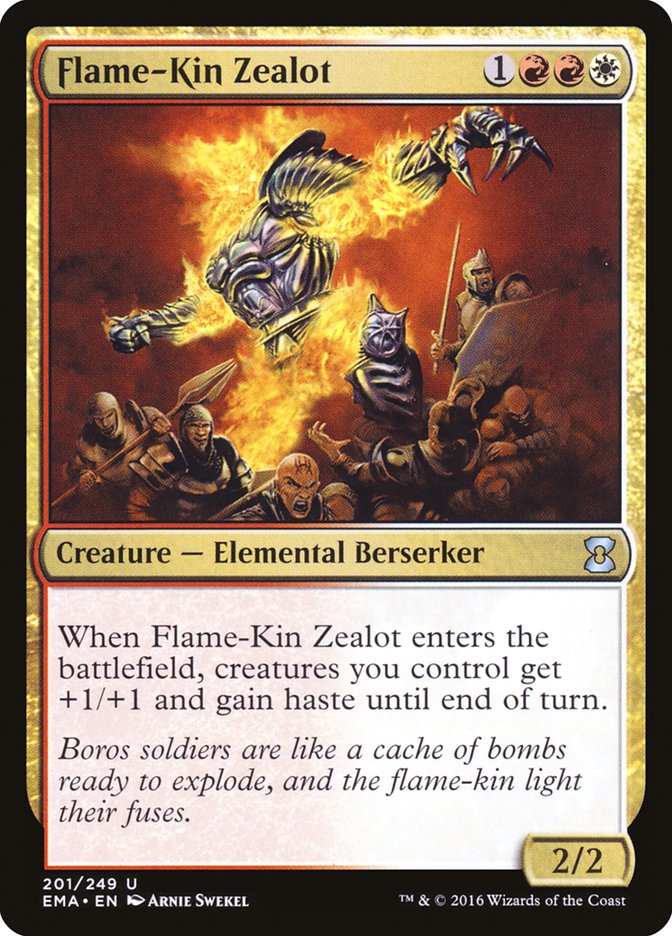



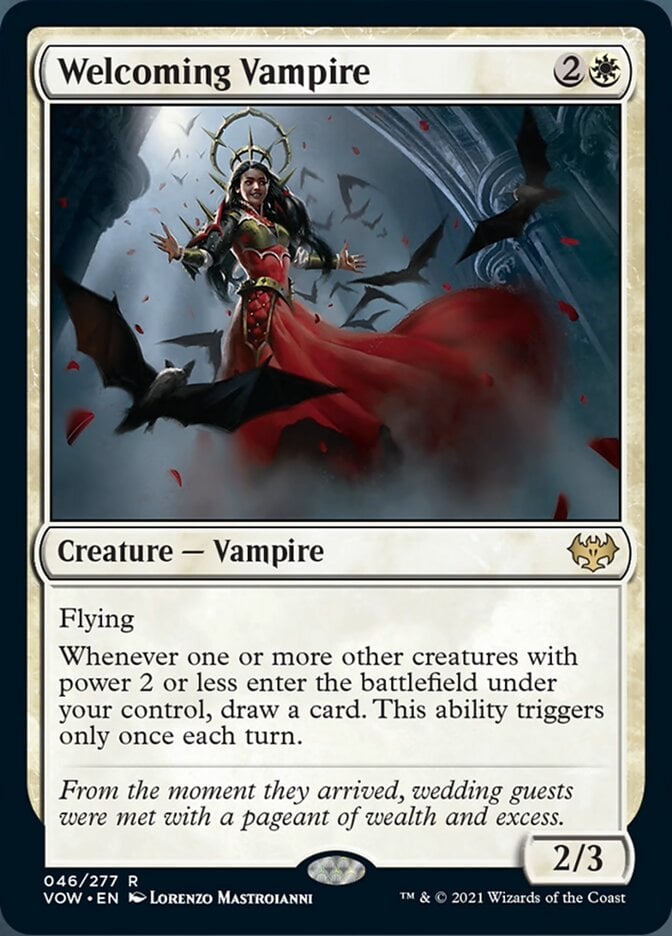
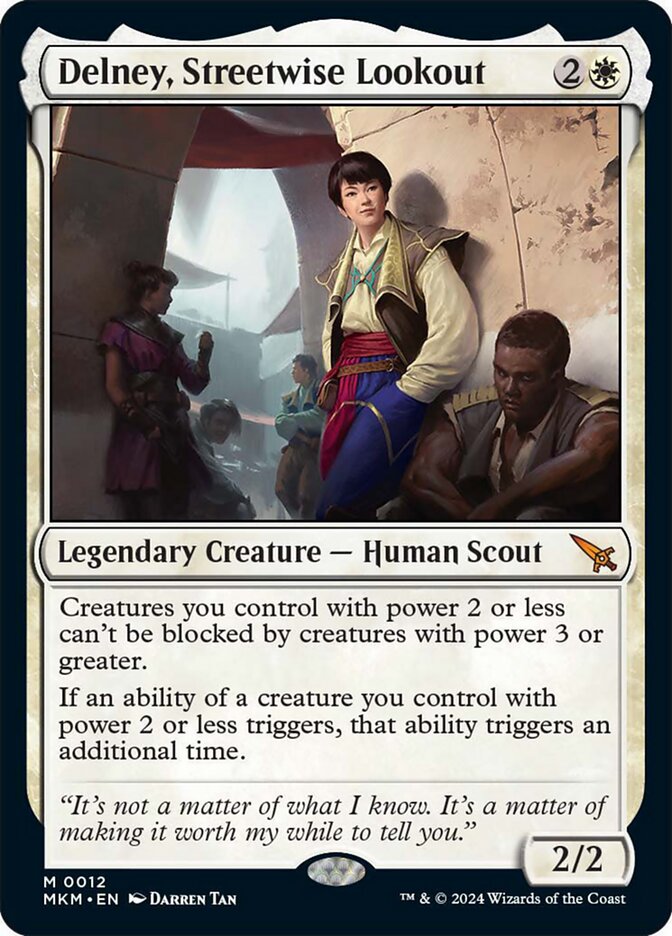
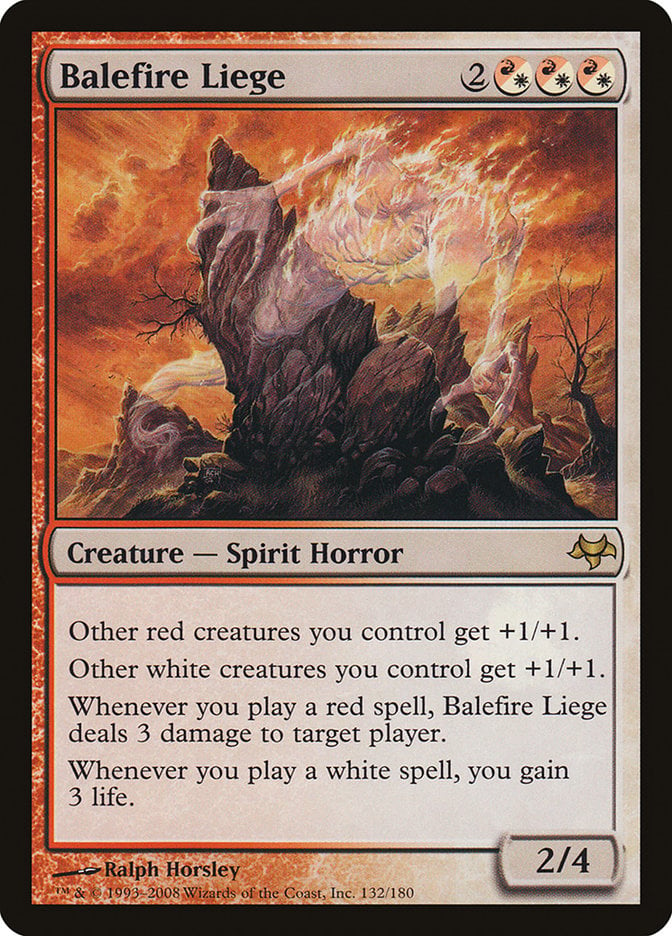
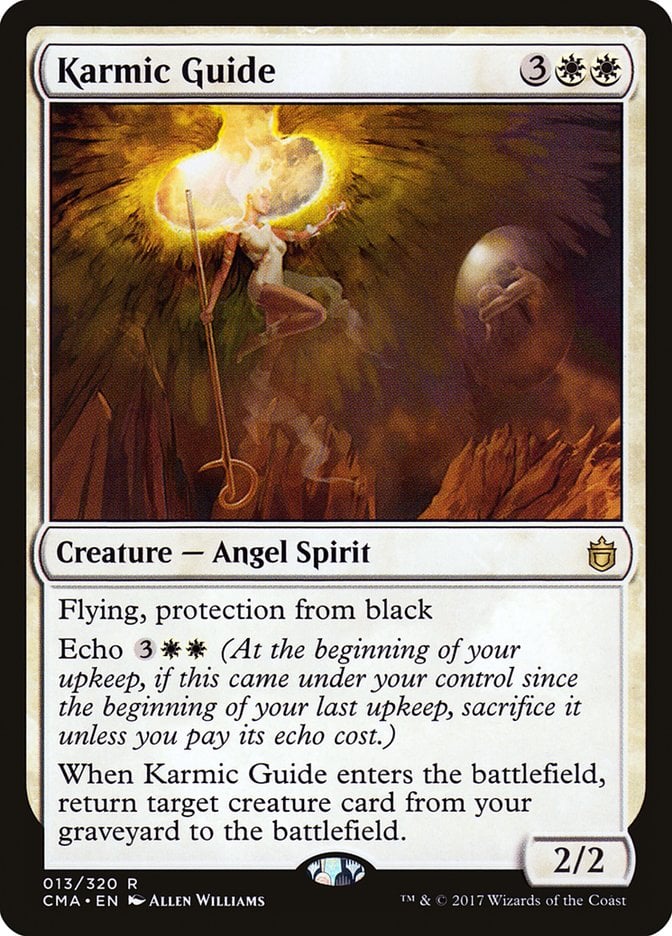

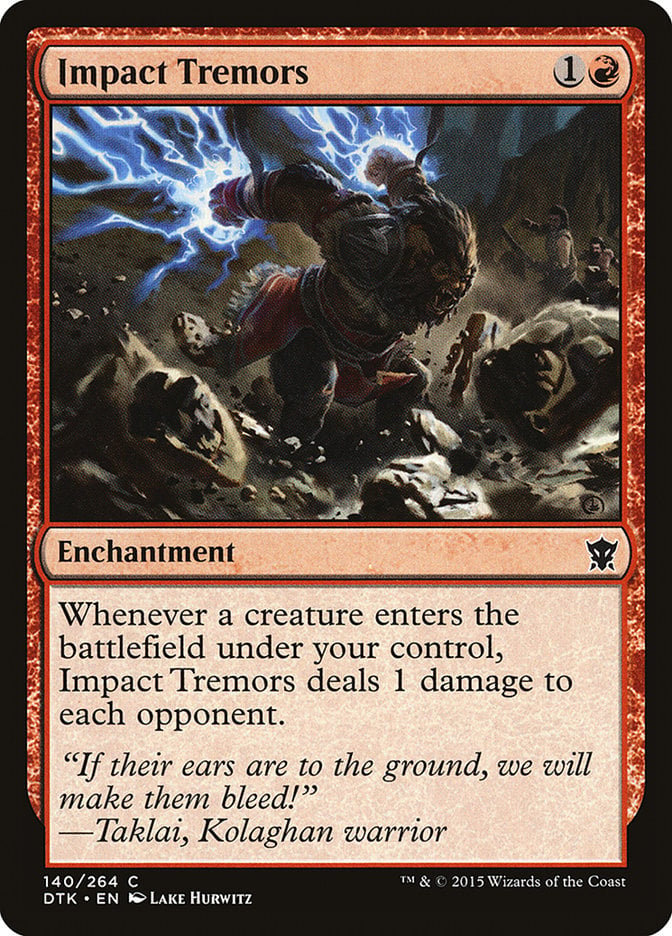
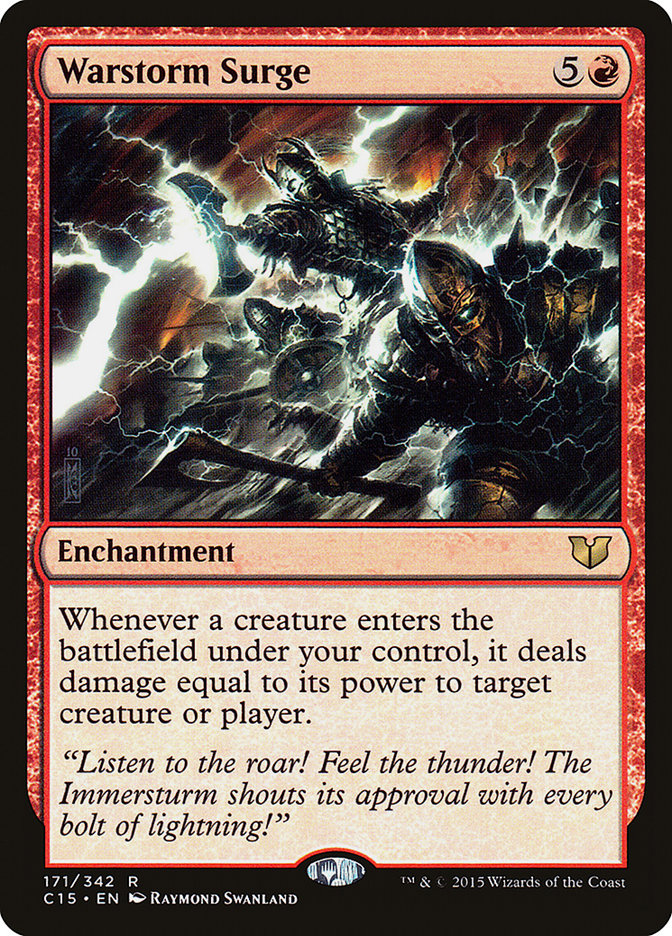
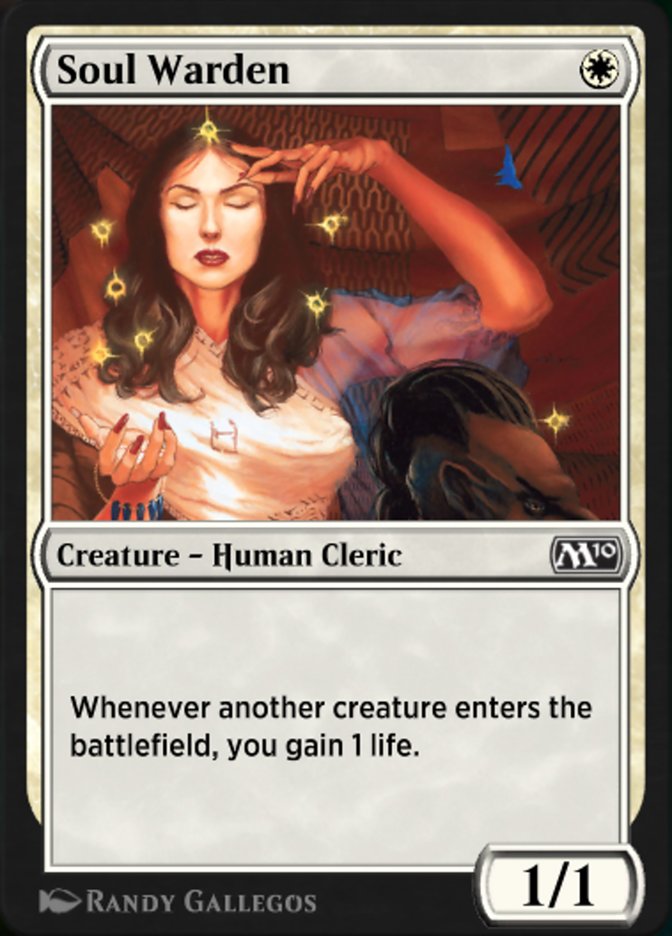
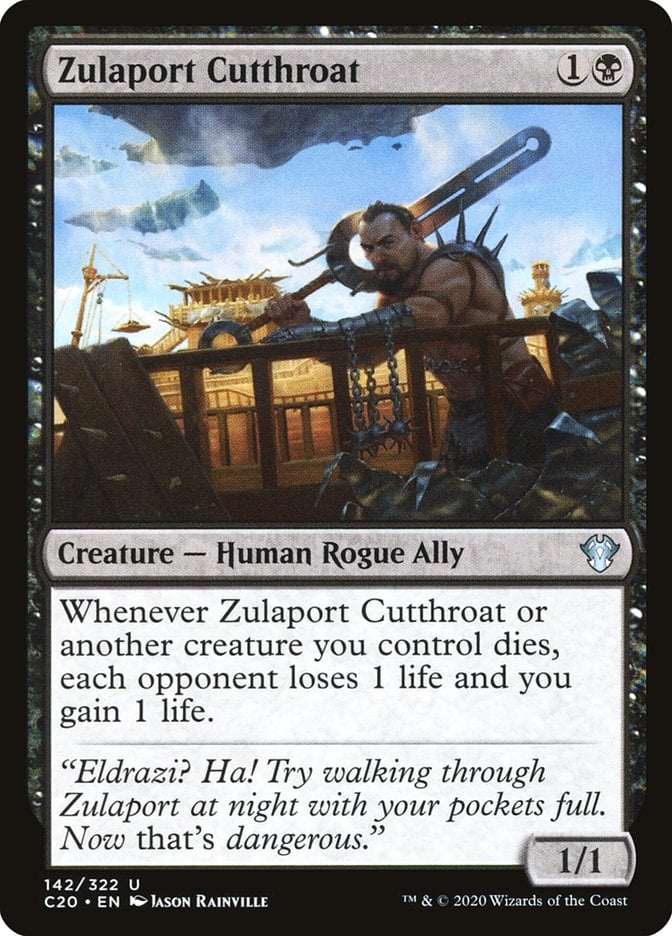


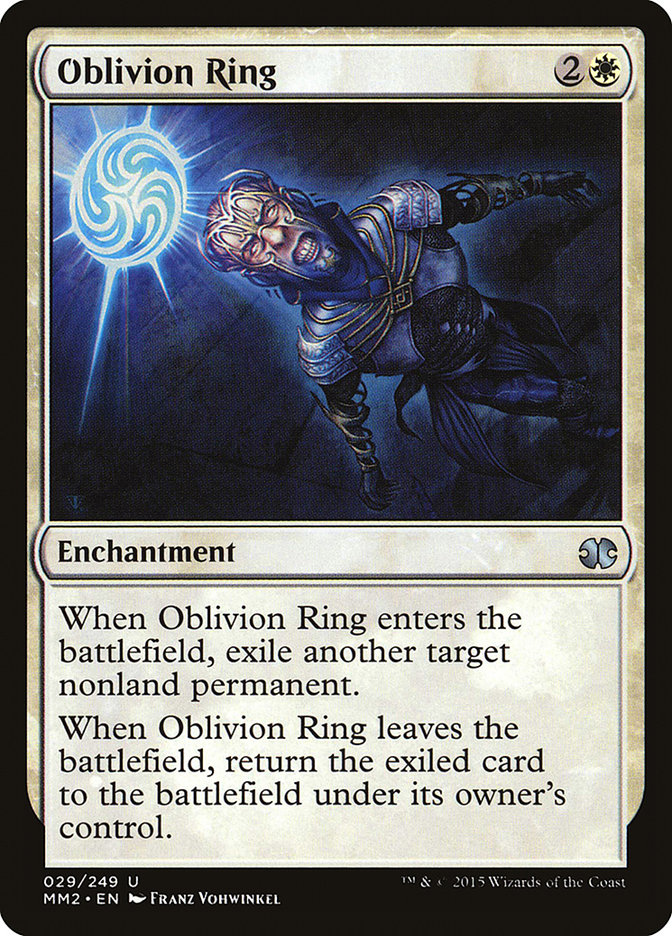
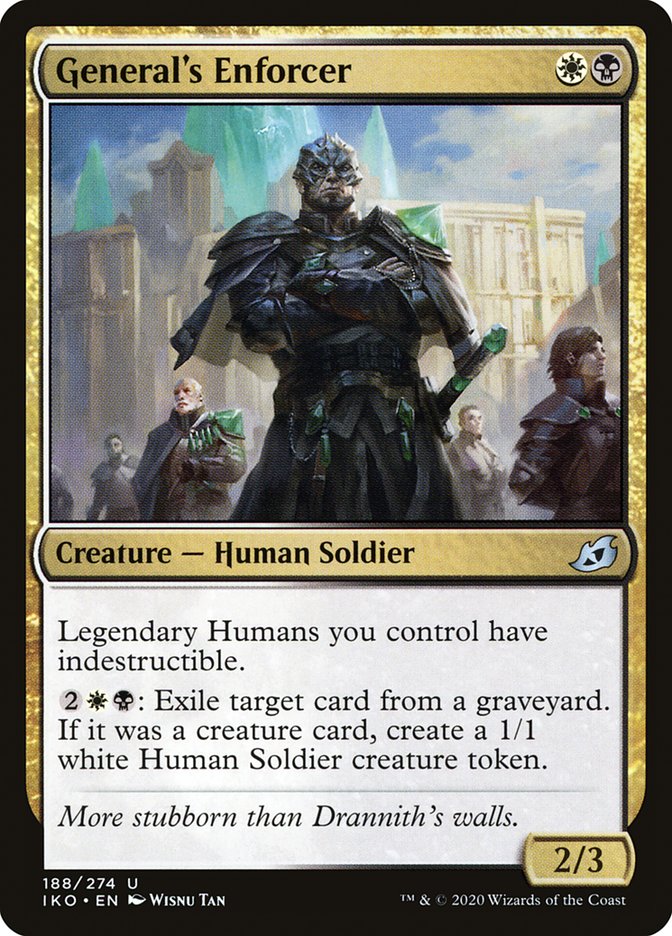
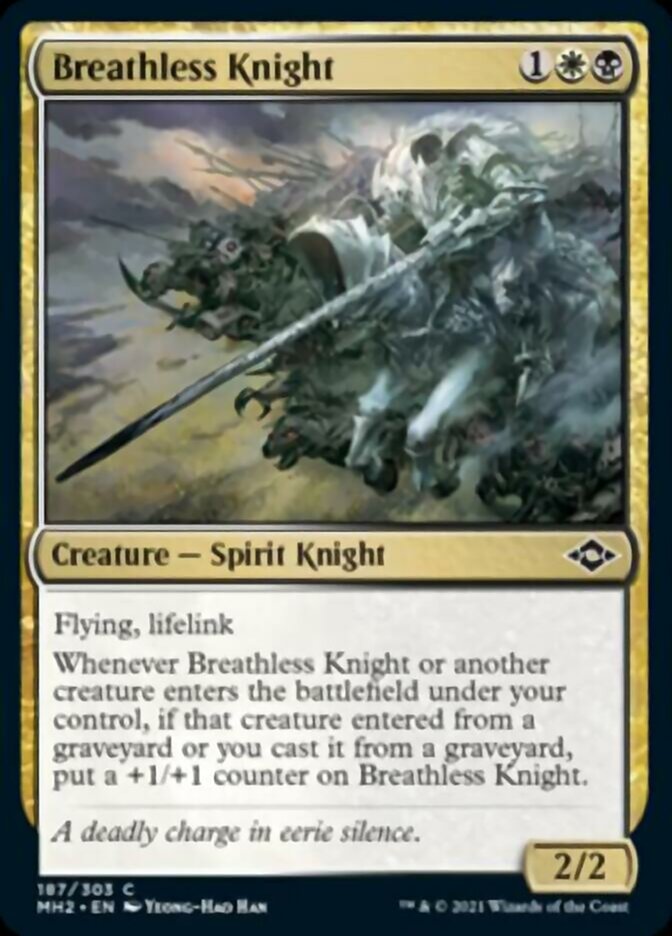
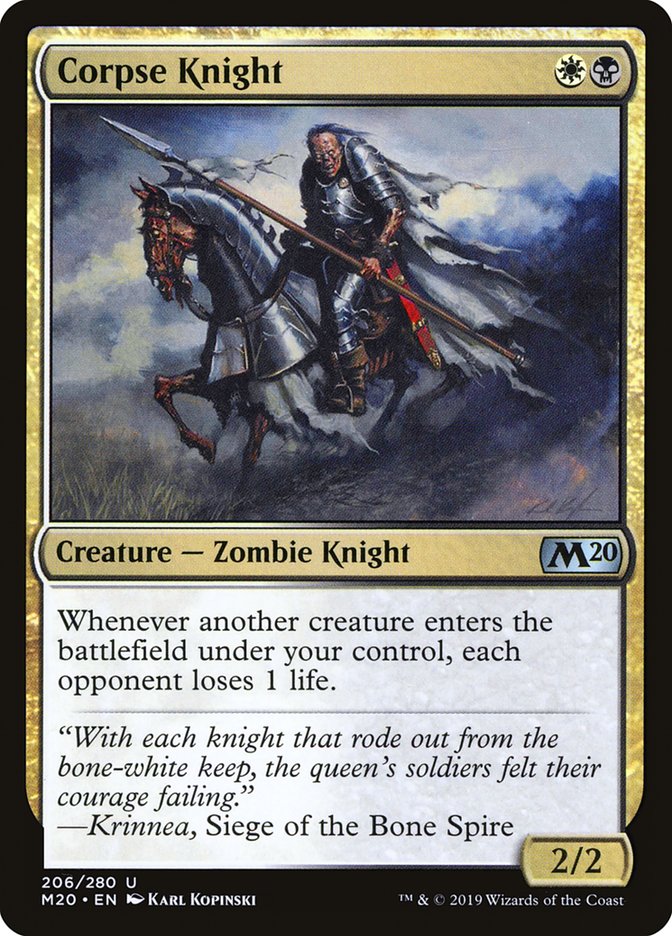
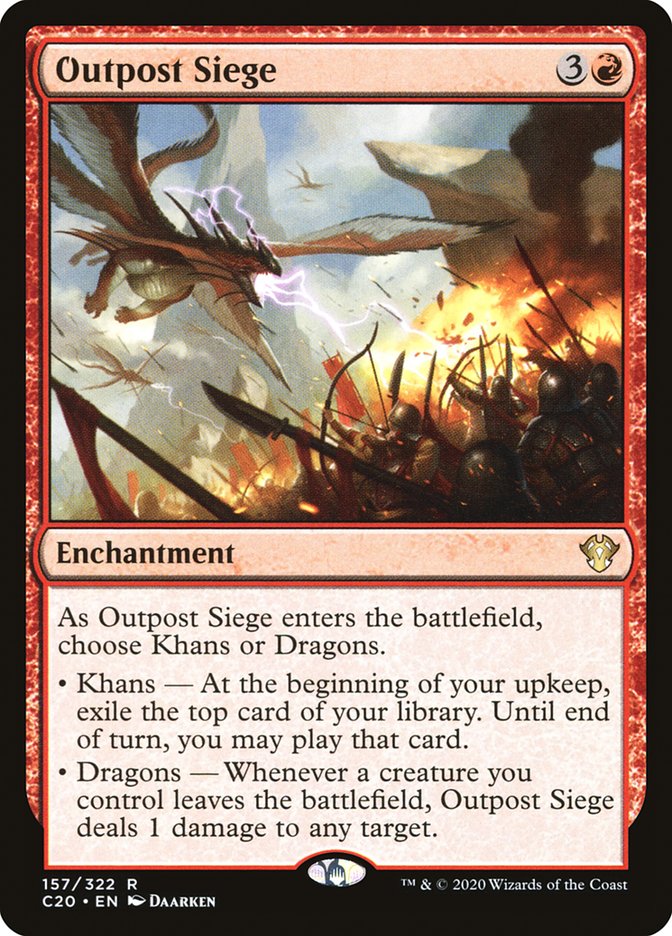
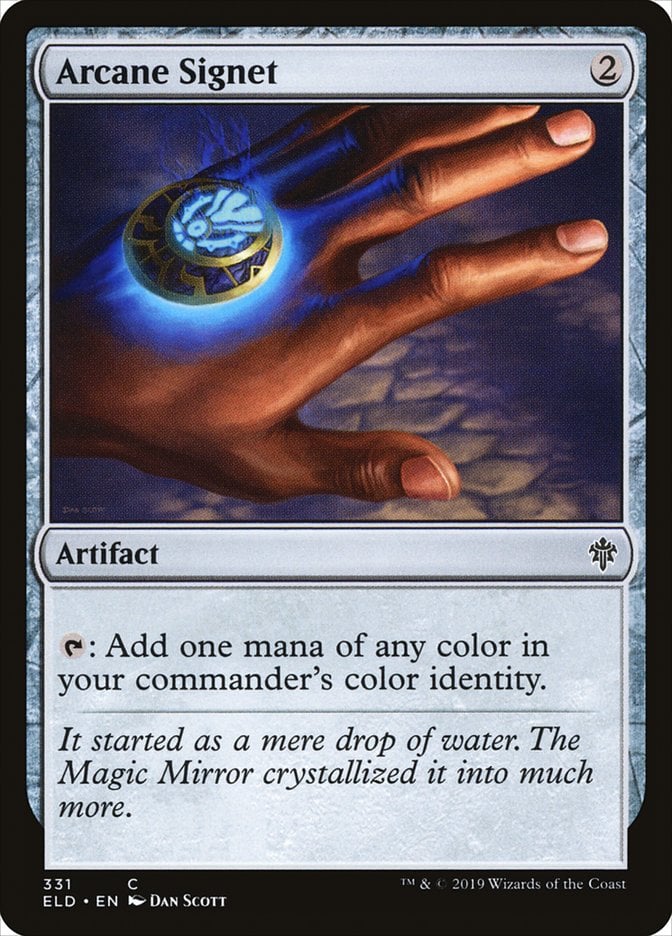

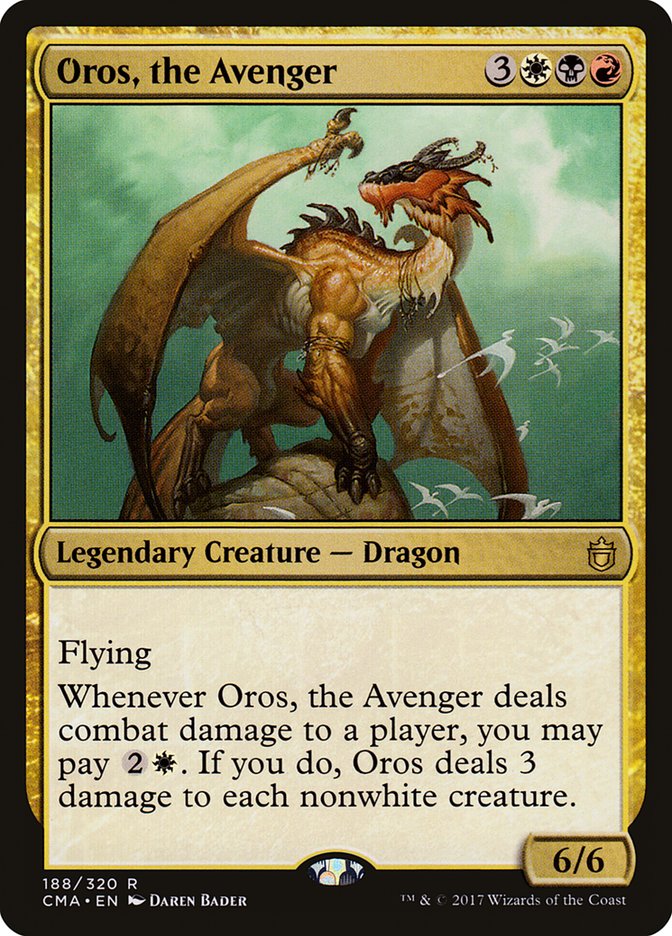

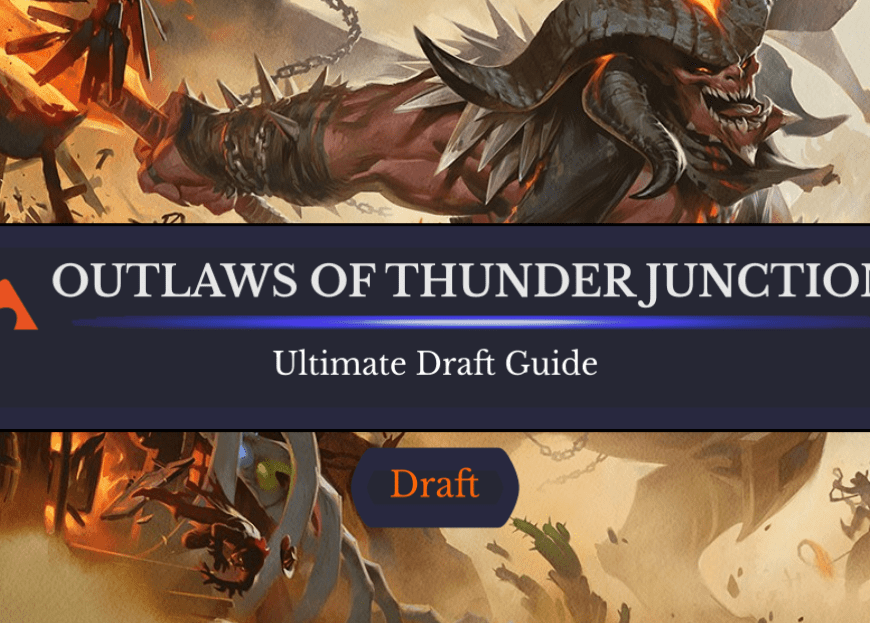
Add Comment